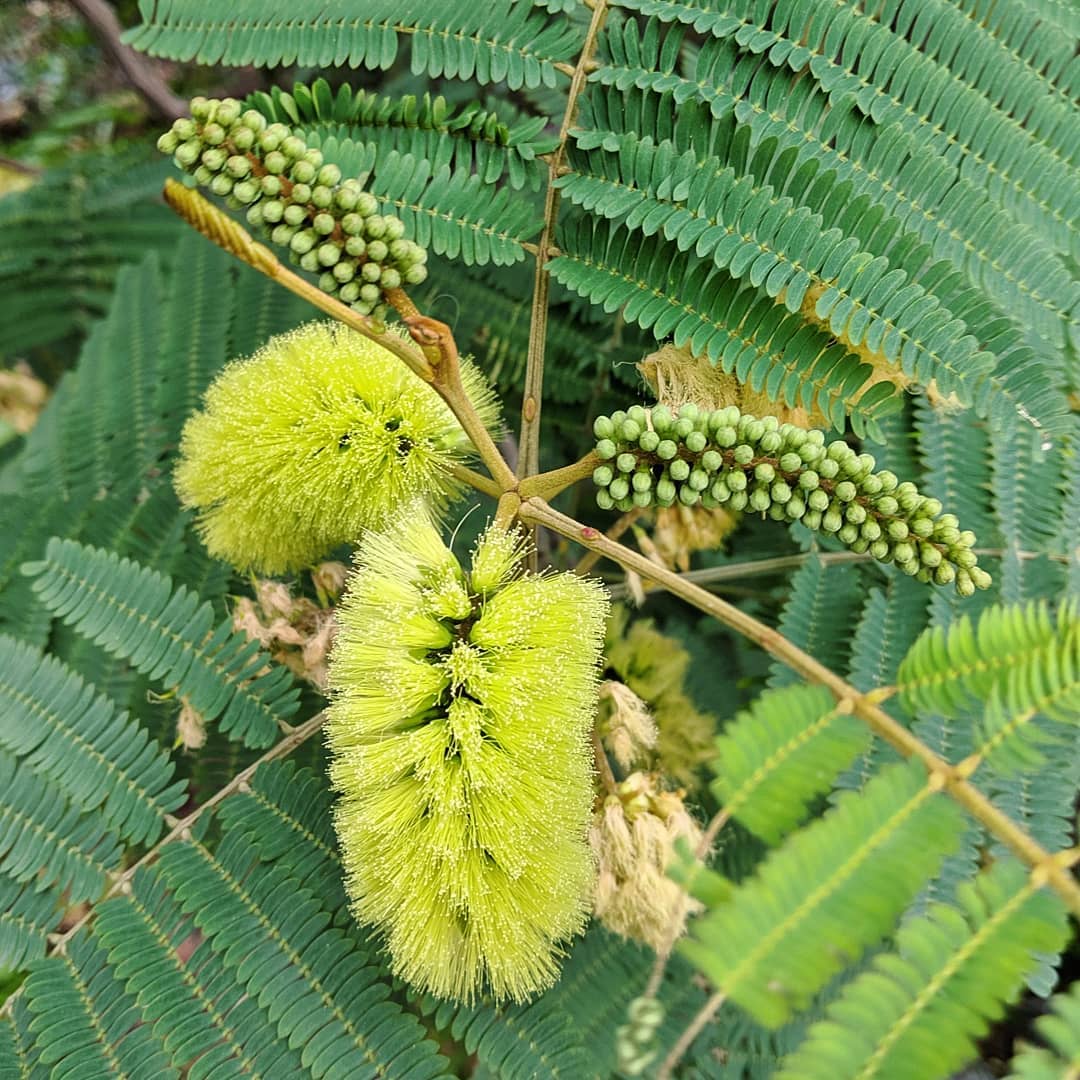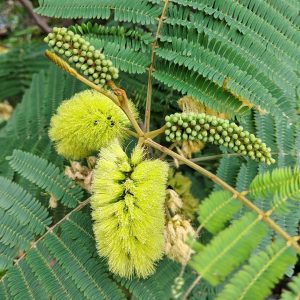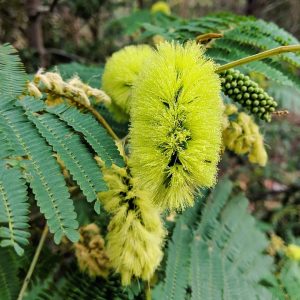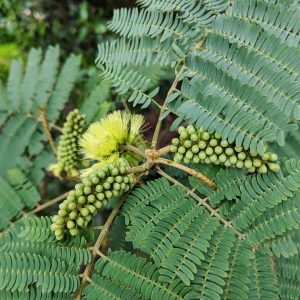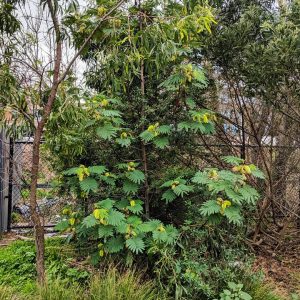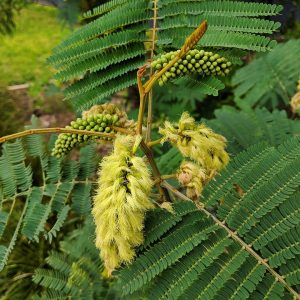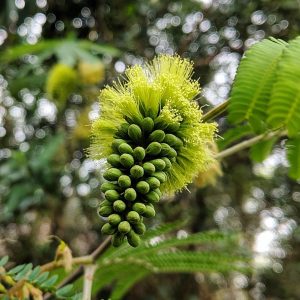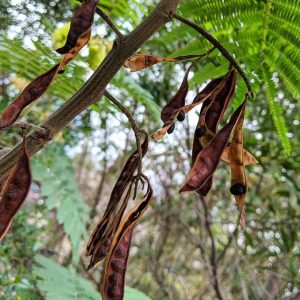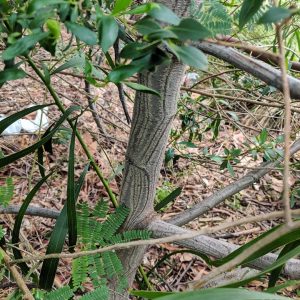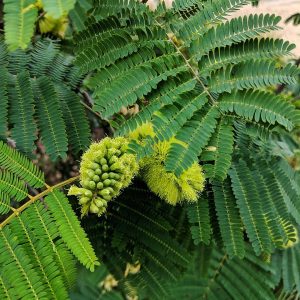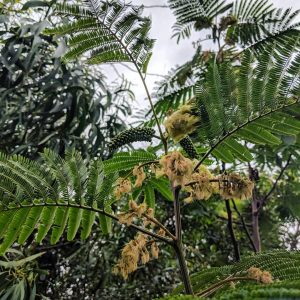Cape Wattle (Paraserianthes lophantha), a Western Australian relative of Acacia that has been distributed in European cultivation across the rest of the continent.
Widely purported to have first been carried by explorers given packets of seed by Ferdinand von Mueller, this is a modern claim that appears apocryphal. However, the ideology of 19th c. botany was horticultural and personal, and despite being well-aware of problems with naturalised weeds by the 1850s and 1860s, and that ‘mischief may be done by careless introductions’, botanists of the time were largely untroubled.
von Mueller’s ‘Select Extra-Tropical Plants broadly suitable for Industrial Culture or Naturalisation’ included Cape Wattle as a fast-growing cattle browse and temporary shelter in barren places, particularly to shelter other trees in establishment. These uses explain the scattering of Cape Wattle through far-flung coastal and interior settings.
Cape Wattle was also planted incredibly widely in settlements as a fast-growing foliage plant. Overuse garnered it a reputation as a tacky shrub; as early as 1860 the Victorian Farmers Journal described Cape Wattle as a ‘noxious and vulgar intruder.’ The early Geelong Botanic Gardens were criticised for ‘gum trees and Cape wattles, which constitute the majority [and] done as though it had been the intention to constitute a forest, without regard to picturesque effect.’ (Leader, 1876)
Although soon out of favour ornamentally, Cape Wattle continued to be recommended to land managers. A 1950 article in NSW farmers paper The Land lauded the species for use in shelterbelt plantings, noting that once established in rows ‘you can leave the Cape Wattle to set about its own regeneration.’
Cape Wattle has also been naturalised in coastal situations around the world. The photographed plant was growing within a planted buffer on the edge of Yarra Park in East Melbourne, adjacent to the Jolimont railway cuttings. Small stands also exist along track through North Melbourne and Kensington, established on railway metal and other poor substrates.
View Original Post on Instagram
Search for information about Paraserianthes lophantha in the Flora of Victoria
View information and occurrences of Paraserianthes lophantha on the Atlas of Living Australia
